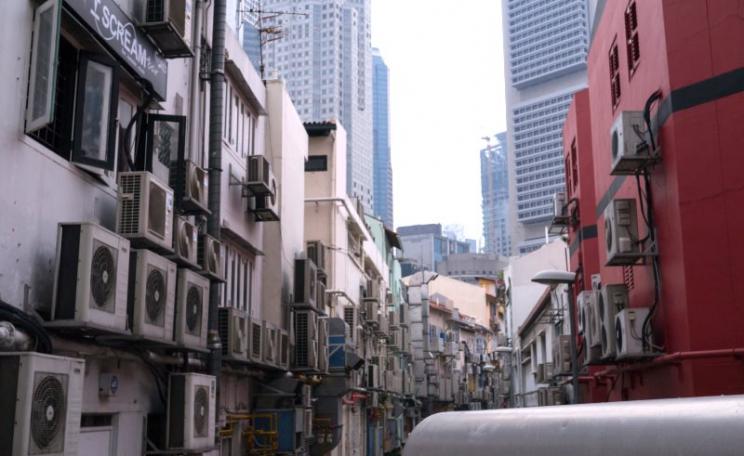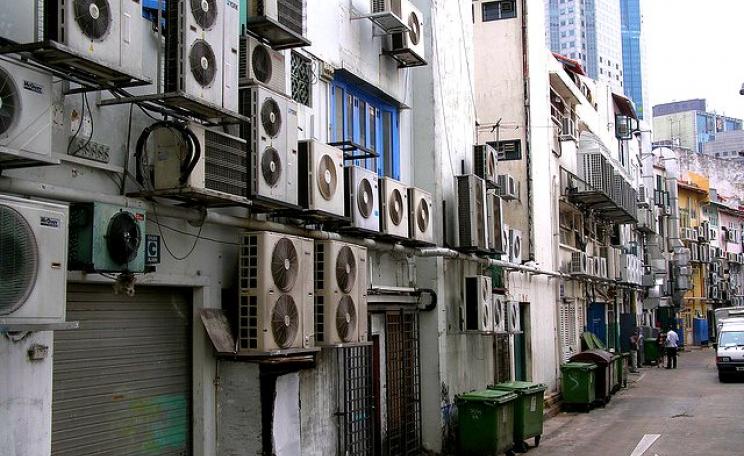Be cheerful because the success of the Vienna Convention and the Montreal Protocol shows that global governments can work together to solve major environmental problems.
It sometimes feels as if environmental news is never good news, but that certainly isn't true when it comes to the ozone layer. The UN has announced that the ozone layer is showing "signs of recovery".
Evidence has pointed to recovery for some time, but researchers have waited until they were confident that the hole in the ozone layer was beginning to heal. It's not yet restored to perfect health - that will take a few more decades - but a significant corner has been turned.
That good news comes 30 years after governments around the world began to sign up to the Vienna Convention for the Protection of the Ozone Layer.
Solving global environmental problems takes time, but the success of the Vienna convention, and the Montreal Protocol that puts the convention in to action, is proof that when the world works together, and keeps working together even when the going gets tough, it can deliver the solutions that we all need.
Of course, having written "that we all need" begs an important question. Why does the ozone hole matter to me?
We have all seen those NASA images of the ozone hole over the Antarctic, but that's a long way from where most of the planet's population lives. It's a little like that scene at the end of 'Happy Feet' where the politicians challenged to respond to the plight of the penguins ask why they should "worry about a load of flightless birds".
So why should we worry whether or not there is a little more or less ozone, a tiny fraction of the gases in the atmosphere, than there might have been if we hadn't all changed our fridges and under-arm deodorants?
What's the ozone layer ever done for us?
The most obvious answer is that the ozone layer protects us from ultraviolet (UV) light, and that being exposed to too much UV can eventually cause skin cancers. OK, but just how many skin cancers have been prevented by protecting the ozone layer?
Until recently, it has been hard to answer that with any sort of numbers, but research has begun to model what the world would have been like if we had not protected the Earth's ozone layer.
These 'world avoided' models are indicating that without the Montreal Protocol people around the world would already be exposed to increases in UV. Those increases would be enough to be causing skin damage that, over time, would mean more people developing skin cancers.
In fact, the most recent estimate of what would have happened without ozone protection suggests that by 2030 there would have been around 2 million more cases of skin cancer a year worldwide.
Be cheerful because the success of the Vienna Convention and the Montreal Protocol shows that global governments can work together to solve major environmental problems.
That can't be a precise figure, but even if we take as a 'ball-park' estimate, that's 2 million people every year being saved from skin cancer because governments acted to protect the ozone layer.
Looking over a longer timescale, do the maths. Two million fewer skin cancers a year, year on year on year soon generates some very large numbers. And those figures don't take in to account the massive ozone depletion that would have occurred worldwide by the middle of this century.
Can we do it again, with climate?
That collapse in global ozone is a consistent outcome of 'world-avoided' research and would have increased UV levels around the world beyond anything that has ever been experienced since humans evolved.
Maybe we could have coped with that, but it would have been difficult. Yes, we can all reduce our exposure to UV by how we choose to behave, that's probably the biggest factor affecting our risk of skin cancer in the world we actually live in. But what about in the world avoided?
How much sun-cream would you have needed if without protection you would begin to sunburn in just a few minutes? What clothes would you send your children to school in? Health-warning signs on the beaches?
And even if you could cope, what about the damage to crops, to forests and to the oceans that would have resulted from run-away increases in UV, the scale of which we can't yet really quantify.
So yes, the news that the ozone layer is beginning to recover is a good reason to be cheerful. Be cheerful because we have protected the planet. Be cheerful because we have protected human health.
Above all, perhaps, be cheerful because the success of the Vienna Convention and the Montreal Protocol shows that global governments can work together to solve major environmental problems.
When the Vienna Convention was signed no one could be really sure exactly how ozone depletion might develop, but governments were brave enough to make tough decisions based on the best estimates of future risks. 30 years later, research allows us to confirm just how right those decisions were.
Surely that's good news not just for ozone, but also as we look ahead to the even tougher challenges of responding to climate change.
Nigel Paul is co-chair of the United Nations Environment Programme (UNEP) panel on ozone depletion and Professor of Plant Science at Lancaster University, but he writes here in his personal capacity. During the 1990s he received funding for research in to the effects of ozone depletion from UK research councils and the EU.
This article was originally published on The Conversation. Read the original article.
![]()




